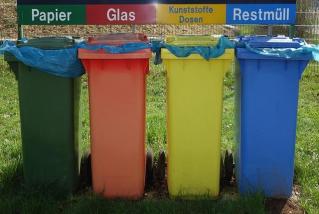 Dr. Yana-Shapiro, a researcher from Mars, has claimed that if higher-yielding cacao trees are not engineered, the chocolate demand would overcome the supply within the next fifty years. He also stated that strains such as these could help farmers’ welfare in the appropriate regions. Luckily, the genome of the cacao tree has been released to the public this past September. The accessibility of the genome will probably lead to better tasting, healthier chocolate.
Dr. Yana-Shapiro, a researcher from Mars, has claimed that if higher-yielding cacao trees are not engineered, the chocolate demand would overcome the supply within the next fifty years. He also stated that strains such as these could help farmers’ welfare in the appropriate regions. Luckily, the genome of the cacao tree has been released to the public this past September. The accessibility of the genome will probably lead to better tasting, healthier chocolate.
The genome sequencing was a joint effort between Mars, IBM, the U.S. Department of Agriculture and various universities. Dr. Shapiro described the date of the release “the greatest day of my life” while speaking at an event in IBM’s research labs in Zurich. He went on to explain that Cote d’Ivoire is the largest cocoa producer in the world, and that Mars has bought cocoa from there for sixty years. He eventually began to understand the ecological and environmental conditions, as well as the productivity, and realized that this region was at a moment of crisis.
The genomes of rice and wheat have also been decoded, however these crops are generally grown on large, industrial farms. Cocoa, on the other hand, is mostly grown on small farms and sold in more private markets.

 Being Green is not just for Kermit the Frog. Most Americans now feel a commitment to improving the environment and trying to keep the planet safer and healthier for the next generation. One of the most important changes you can make in your lifestyle is to recycle. There are many materials that can be recycled and a number of methods for assuring that that maximum number of household items are recycled. We’ll go through these different elements one by one, beginning with today’s focus: Paper Recycling.
Being Green is not just for Kermit the Frog. Most Americans now feel a commitment to improving the environment and trying to keep the planet safer and healthier for the next generation. One of the most important changes you can make in your lifestyle is to recycle. There are many materials that can be recycled and a number of methods for assuring that that maximum number of household items are recycled. We’ll go through these different elements one by one, beginning with today’s focus: Paper Recycling.
 Scientific studies in the past have supported the common knowledge that sleeping in on the weekend will just make it that much more difficult to get up on time for work or school. However, a new scientific study seems to actually give credence to the urge most of us have to use the weekend as a chance to catch up for insufficient sleep during the week.
Scientific studies in the past have supported the common knowledge that sleeping in on the weekend will just make it that much more difficult to get up on time for work or school. However, a new scientific study seems to actually give credence to the urge most of us have to use the weekend as a chance to catch up for insufficient sleep during the week. “Going Green” is the catchword of the times. But even with the best of intentions, many people are not sure how to actually integrate green technology and good environmental habits into their homes and daily lives. To help you help the planet, we’ve brought you a few recommendations on how to make your house more green.
“Going Green” is the catchword of the times. But even with the best of intentions, many people are not sure how to actually integrate green technology and good environmental habits into their homes and daily lives. To help you help the planet, we’ve brought you a few recommendations on how to make your house more green.